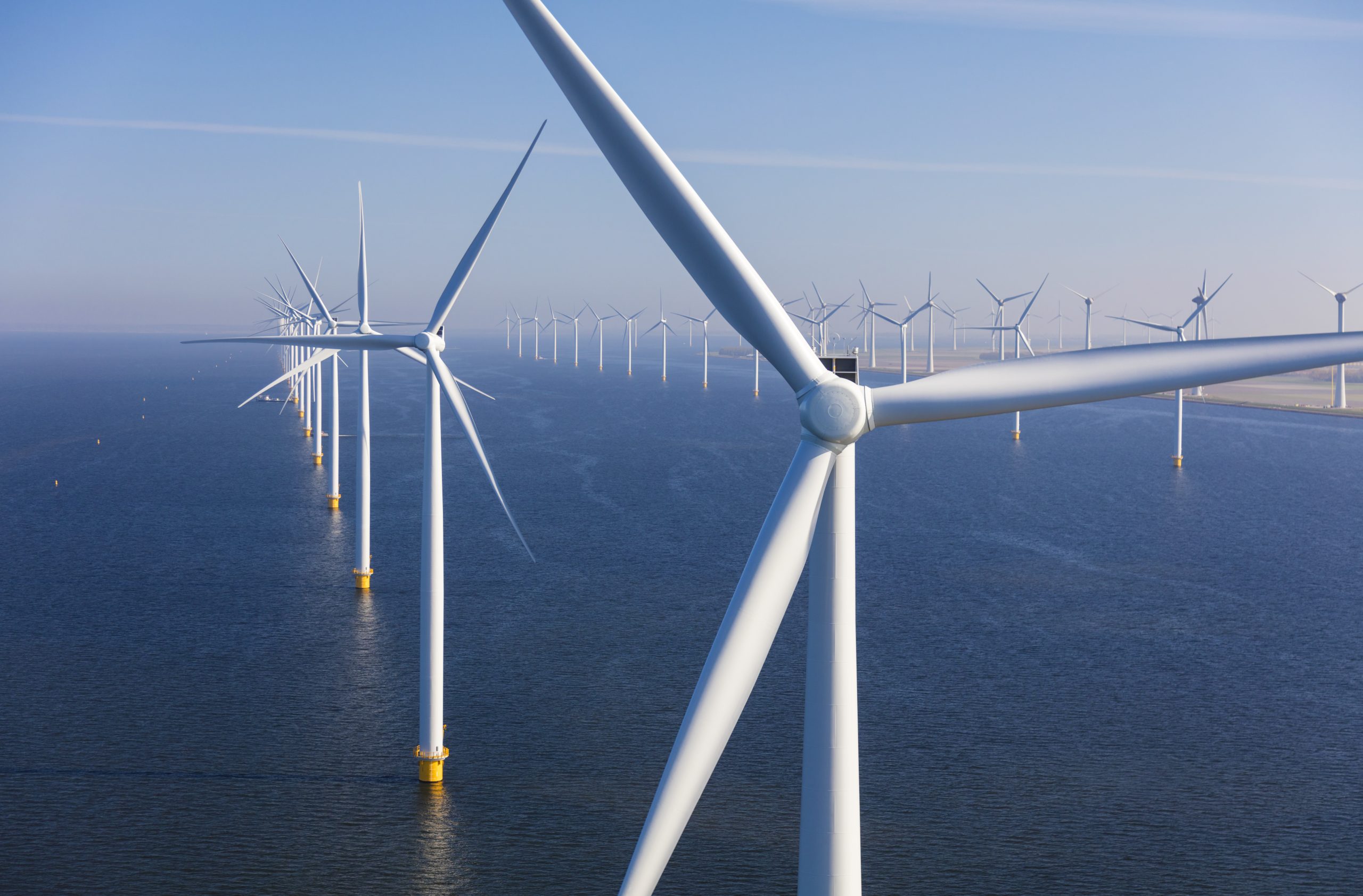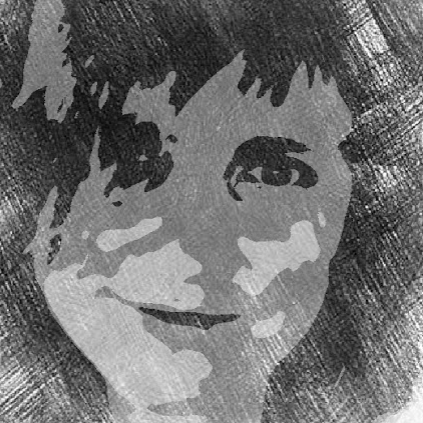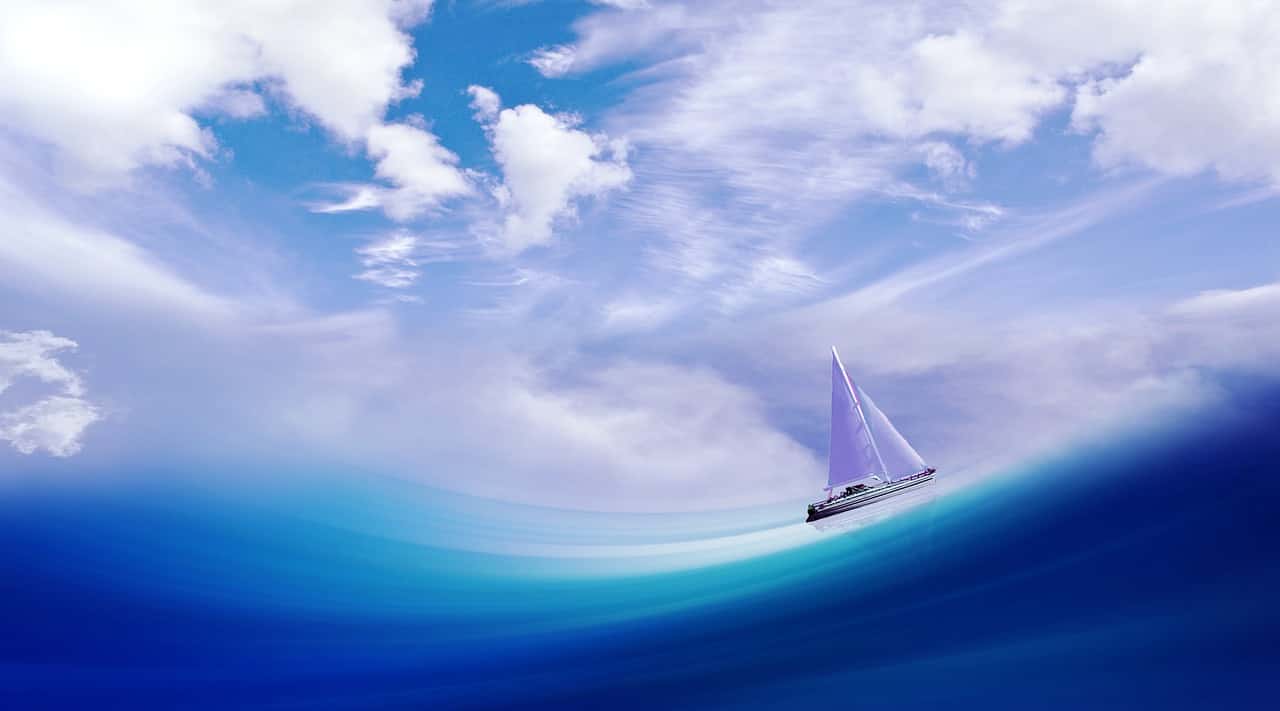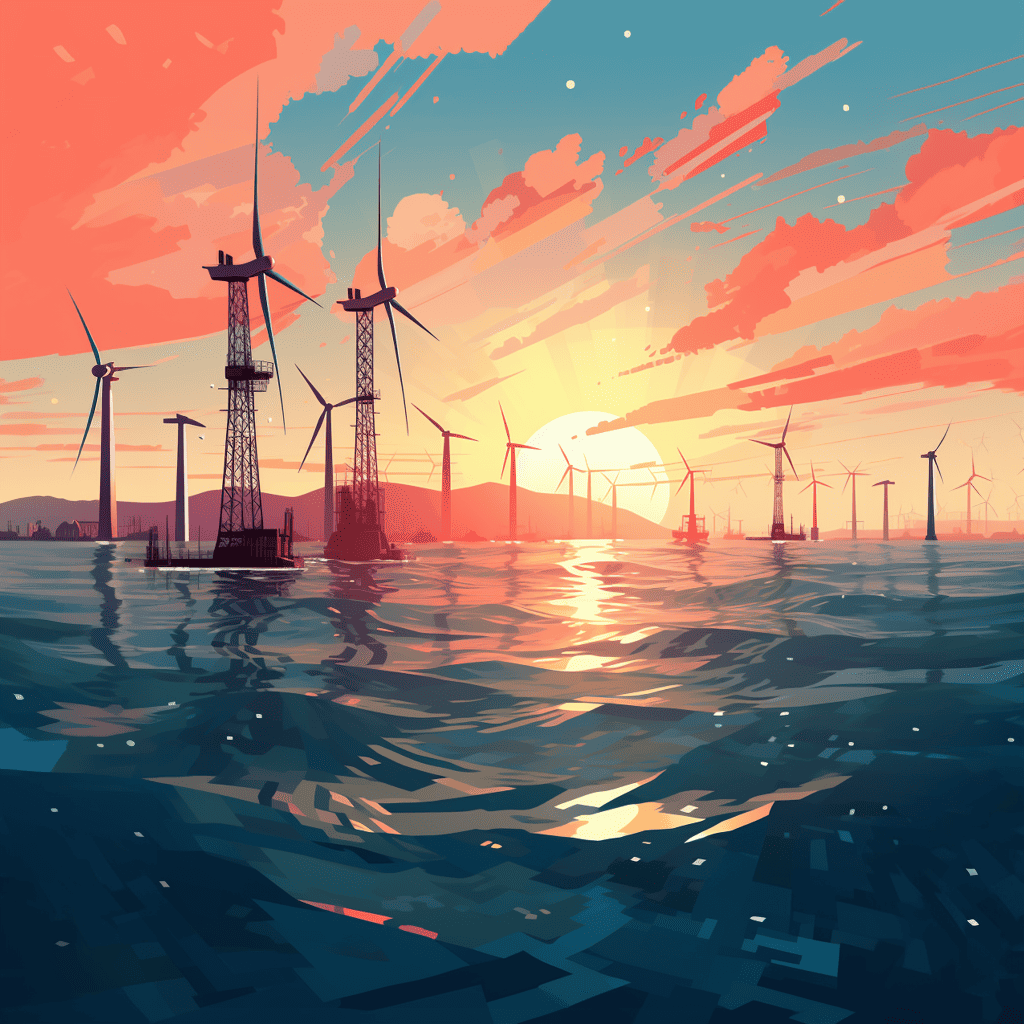
In ten years’ time, the North Sea will no longer be the sailing and nature area as we know it today. There will be far more wind turbines by then than there are now. Moreover, they will be even higher than the tallest wind turbines currently in existence. “Work is being done on a turbine with a height of 250 meters,” says Peter Eecen. He is the offshore wind R&D manager at the Netherlands Organisation for Applied Scientific Research (TNO). That’s no longer such a big difference with the Eiffel Tower in Paris. Measured to the top of the flagpole, it is 314 meters high.
In 2030, a towering wind turbine like this should actually be able to operate at sea. The higher the turbine, the larger the blades and the more energy they generate. The capacity of a 250-meter high turbine is estimated to be 20 megawatts. The tallest turbine that, according to the presentation, will be running in 2021, is 220 meters in height, and will generate a maximum of 12 megawatts. Turbines from 2016 reached a height of 164 meters and generated a maximum of 8 megawatts.
By 2050, the surfaces of the shallowest waters will be filled up even more with these green energy factories. At least, that is if the Netherlands intends to meet the climate targets set in Paris. And generate CO2-neutral energy in thirty years’ time.
This was the conclusion of a presentation given by the TNO last month to journalists. It focused on one perspective involving the preliminary drafting of the energy transition. The reason that the North Sea will be full of wind farms in the shallowest areas is that these are the cheapest place to install these turbines. Longer masts are needed in deeper parts than in shallower parts. Most of the shallow sections (up to a depth of about 20 meters) are closest to land. This also makes the construction and maintenance of wind farms cheaper because they are located less far away.
Ever-more wind farms off the Dutch coast
A large-scale wind farm is under construction at Borssele in Zeeland in the south of the Netherlands. Its future capacity is estimated at 1483.5 megawatts. The Luchterduinen wind farm is located off the coast of South Holland. It is capable of generating 129 megawatts. More wind farms are expected to be added, which together will generate 1520 megawatts. There is a wind farm near Egmond aan Zee off the coast of North Holland which has a generation capacity of 108 megawatts. Nearby, three more wind farm zones are planned which together will generate a further 6100 megawatts in future. Another wind farm that can generate 700 megawatts will be built above the Wadden Islands.

The reason that the sea has been chosen as the location for future energy generation is that offshore wind turbines can provide the most sustainable form of energy in comparison to onshore wind and solar energy. An island needs to be created in the North Sea for this. That is because this energy generation is subject to too much fluctuation. And because the Dutch electricity grid is not robust enough to process all of this (simultaneously) generated energy in the future. There should then be enough scope for converting wind energy from alternating current to direct current.
There also needs to be storage capacity for energy so that it does not need to be sent directly to the onshore electricity grid. Storage can be provided either through batteries or by hydrogen production by means of electrolysis. Gas pipelines can be used to transport hydrogen. This, in turn, can be converted back into electricity on land as soon as there is a demand for it.
Energy storage and distribution station in the Dogger Bank nature reserve
The question now is where that energy island should be located. The shallowest part in the middle of the North Sea lies between the waters of the Netherlands, Denmark, Germany, and the United Kingdom. That area is called the Dogger Bank. According to Eecen, an advantage of that location is that wind farms off the coast of Denmark, Germany and the United Kingdom can transport their energy to there and store it there too. The upside is that if the wind is strong in those areas, but not or not so strong off the Dutch coast, this energy can then be sent to the Netherlands. Eecen expects that the fluctuation in the supply of wind energy could level off as a result of such a distribution station in the middle of the North Sea.
Consequently, the advantage of the location on the Dogger Bank is that it is relatively shallow. The shallowest part is about 20 meters. The only problem is that fish also find that area attractive for that purpose. It is a spawning area, an area where they mate and lay eggs. It’s also the habitat of seals and porpoises and is a protected area for that reason. It has been registered as a Natura 2000 area since 2016. According to earlier reports concerning the idea of making a distribution station there for wind energy generated in the North Sea, the island would only take up 0.2 percent of the total area of the Dogger Bank. The question, however, is whether this would really still be the case. After all, cables will have to be laid in the relatively shallow areas that will transport energy to the various countries.
Research into ecological impacts on birds, but not on fish
According to Eecen, extensive research is to be carried out into the repercussions on the ecological conditions around wind farms and the future energy island. For example, a field lab will be established. This is where research will be conducted into the impact of the turbines on birds and bats.
As far as is known, no research is planned into the effect on fish and other organisms in the sea from the energy cables over the seabed and the wind turbine masts anchored in the seabed. Research has been done in the past on mackerels in the vicinity of Egmond aan Zee,” says Eecen. It turned out that these fish were growing bigger and slightly thicker. That’s because plants were growing on the substrate of the foundations of the wind turbines that they eat. According to Eecen, it also turned out that the fish took shelter there because wind farms do not pose any dangers.
What effect electromagnetic fields and infrasonic noise coming from wind farms and power lines across the seabed have on the fish population over the longer term has so far not yet been studied. According to a large group of Dutch fishermen, this does adversely affects fish life. They are demanding more environmental research into this.







